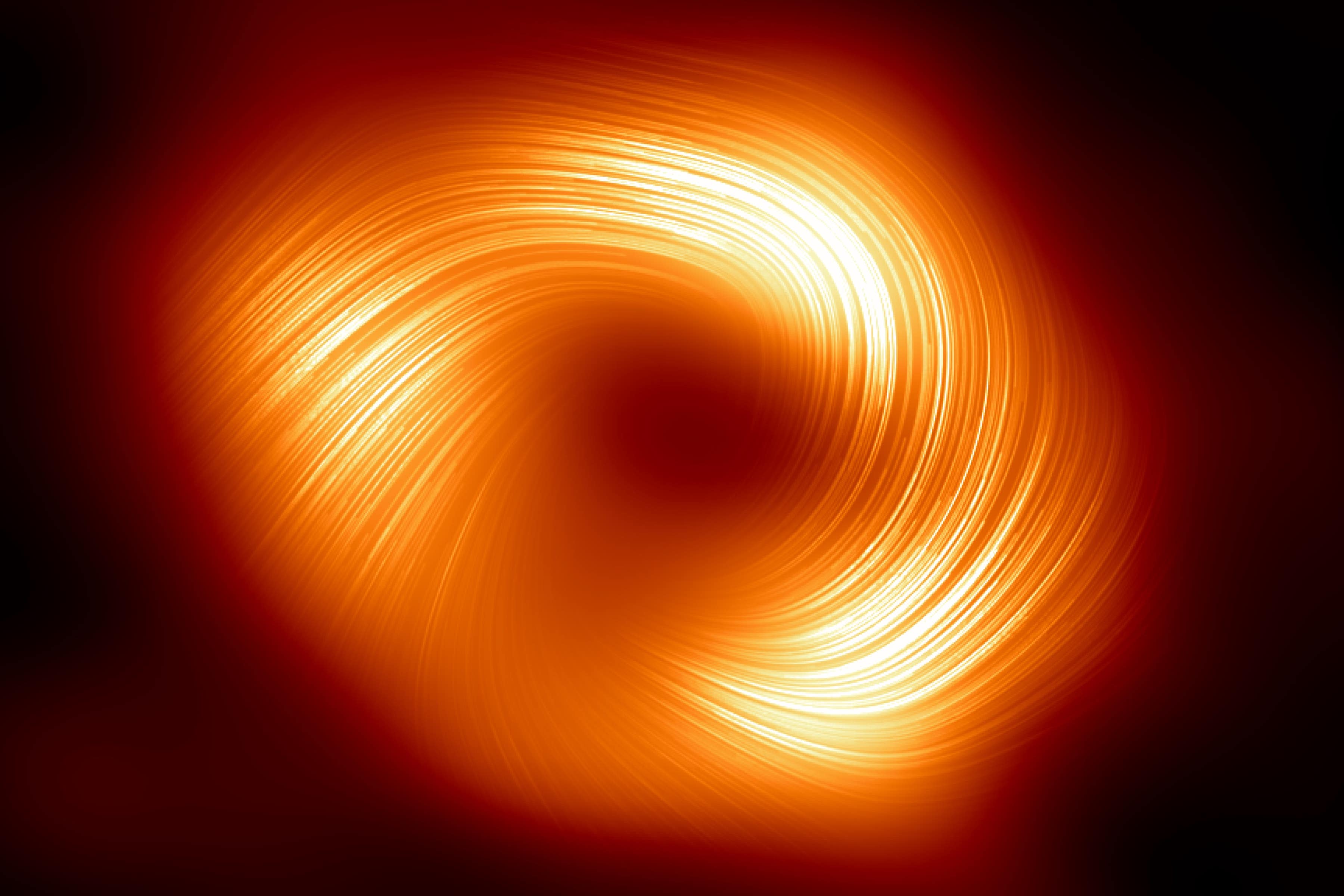New image shows magnetic fields at edge of Milky Way’s central black hole
The findings suggest that strong magnetic fields may be common to all black holes.

Your support helps us to tell the story
From reproductive rights to climate change to Big Tech, The Independent is on the ground when the story is developing. Whether it's investigating the financials of Elon Musk's pro-Trump PAC or producing our latest documentary, 'The A Word', which shines a light on the American women fighting for reproductive rights, we know how important it is to parse out the facts from the messaging.
At such a critical moment in US history, we need reporters on the ground. Your donation allows us to keep sending journalists to speak to both sides of the story.
The Independent is trusted by Americans across the entire political spectrum. And unlike many other quality news outlets, we choose not to lock Americans out of our reporting and analysis with paywalls. We believe quality journalism should be available to everyone, paid for by those who can afford it.
Your support makes all the difference.Astronomers have released an image of strong magnetic fields spiralling at the edge of the Milky Way’s central black hole.
The new image from the Event Horizon Telescope (EHT) collaboration shows the organised magnetic fields at the edge of the supermassive black hole Sagittarius A* (Sgr A*).
Researchers say this new view of the monster lurking at the heart of the Milky Way galaxy reveals a structure strikingly similar to that of the black hole at the middle of the M87 galaxy.
The findings suggest that strong magnetic fields may be common to all black holes.
It is very exciting to see the first polarised images of the black hole in the heart of our galaxy
University College London’s Dr Ziri Younsi, a co-author on the papers, and a member of the EHT collaboration, said: “It is very exciting to see the first polarised images of the black hole in the heart of our galaxy.
“These observations reveal much more information about the magnetic fields surrounding the black hole, and will improve our ability to model accreting black holes in the future.
“It is remarkable that the polarisation structure of Sgr A* is so similar to that of the M87 black hole, which we know possesses a prodigious relativistic jet.
“This exciting new study hints at the possibility of a jet hiding near the event horizon of Sgr A*.”
Seen in polarised light for the first time, the image shows orange swirls around the black hole, said to resemble the Eye of Sauron from the film adaption of JRR Tolkien’s Lord Of The Rings.
Light is an oscillating, or moving electromagnetic wave that allows us to see objects, while polarised light is light in which the electric and magnetic fields each vibrate in a single plane.
Although it surrounds us, human eyes cannot tell it apart from normal light.
Around the black holes, particles whirling around magnetic field lines give off a polarisation pattern, allowing astronomers to see what is happening in black hole regions in increasing detail and map their magnetic field lines.
The EHT collaboration involves more than 300 researchers from Africa, Asia, Europe, and North and South America.
The international collaboration is working to capture the most detailed black hole images ever obtained by creating a virtual Earth-sized telescope.
To observe Sgr A*, the collaboration linked eight telescopes around the world to create a virtual Earth-sized telescope, the EHT.
The Atacama Large Millimetre/submillimetre Array (ALMA), in which the European Southern Observatory (ESO )is a partner, and the ESO-hosted Atacama Pathfinder Experiment (APEX), both in northern Chile, were part of the network that made the observations, conducted in 2017.
The findings are published in The Astrophysical Journal Letters.